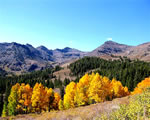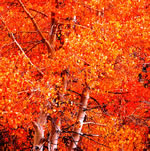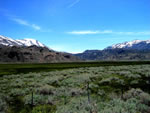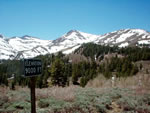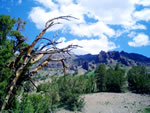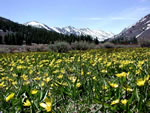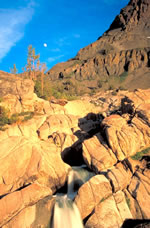Sonora Pass Trail
The first emigrants to cross the Sierra Nevada Mountains into Tuolumne County were the members of the Bidwell-Bartleson Party of 1841. They followed a convoluted route from the headwaters of the Walker River, across a remote mountain pass, down to the Clark Fork of the Stanislaus River, and eventually to the San Joaquin Valley.
In 1852 the Clark-Skidmore Party, led by a group sent out from Columbia, established a new route through the mountains which would become known as the Walker River Trail, although some still referred to it as the Sonora Pass Trail. The following year more than two thousand emigrants used the new trail to the Southern Mines.
By 1854, though, word of the difficulties along the trail had spread and only a trickle of emigrants chose the route. Soon afterward, the Sonora Pass Trail was abandoned.
Today’s Highway 108 parallels the old emigrant wagon route.
Gallery

